|
|
|
|
| Needs Projections are made as an initial phase of a campus planning study to determine what building and site changes will be required to better support an institution's mission and academic plan. Issues and concerns, once defined, become the agenda for planning. In a participatory process, the agenda can be clearly described and quantified, and then prioritized. The extent of campus improvements can be determined by the needs projections, informed by environmental mapping and facility database analysis. |
  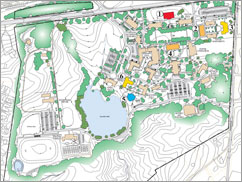 |
| Environmental Mapping is a graphic technique refined by Dober Lidsky Mathey through years of practice. It is a method of analyzing a campus by highlighting critical characteristics about conditions, uses, and activity patterns. That information is displayed in a series of campus site maps at a common scale. Disaggregating information about the environment makes subtle patterns clear and more easily understood so that key issues can be discussed by everyone participating in a planning process. |
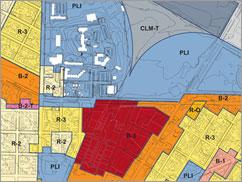  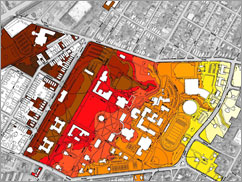 |
| Utilization Analysis is an in-depth study of how a college or university is currently using its space. The study identifies how much space (classrooms, laboratories, offices, library, student life, residential) an institution has, and how that space is being utilized. How much space does the institution have in these particular categories, is the space being used properly, and is the amount of space appropriate for the use? Do the classrooms, laboratories, and offices meet contemporary standards? |
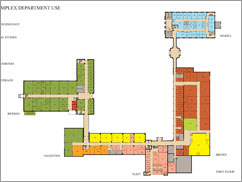  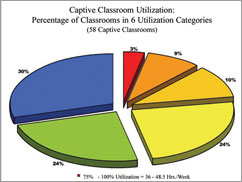 |
| Peer Comparisons examine the amount of space assigned for a particular use across a selection of similar institutions. At the campus plan scale, comparisons can be made on property owned, building square footage, the number of student beds, and institutional endowments. Preparation of a facility database is a prerequisite task. Peer comparisons can be effective in identifying and substantiating the amounts of space allocated or requested. |
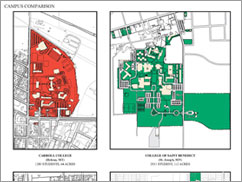  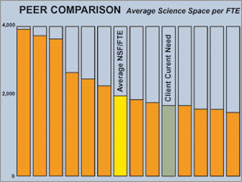 |
| Campus Plan Alternatives are possible solutions to facility and site needs, and as such are an essential part of the campus planning process. Options can be expressed in a range of forms - new buildings, additions to existing buildings, reallocation of existing space, and general or specific site enhancements. A best alternative is identified through an evaluation process based on criteria reflecting the institution's specific values, practices, priorities, and resources. |
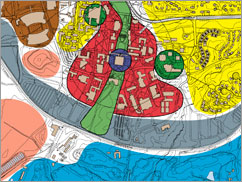  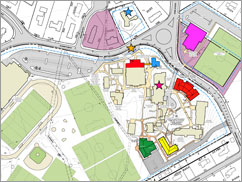 |
| An Implementation Plan is one of the end products of a campus plan or facility plan. Once the college or university understands its space needs and how it wants to move forward, an Implementation Plan creates the strategy for steps the institution can take to meet those goals. Who is responsible for the various steps, and what are the costs and likely funding sources associated with accomplishing these changes? |
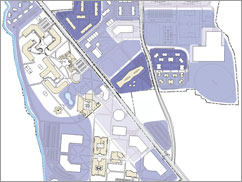  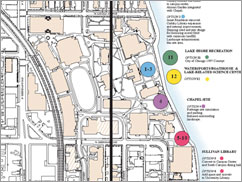 |
| Budget Assessment/Targeting is a process by which construction and project cost estimates are created. This tends to occur as early as possible in the campus plan, but also can be an integral part of the facility planning and facility programming processes. At each stage in the planning and programming process a cost can be developed and checked against institutional budget targets. If the budget target is exceeded, rectifying the situation early in the planning, prior to architectural design, is most effective in maintaining the functionality and viability of the project. |
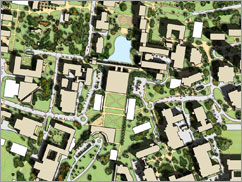  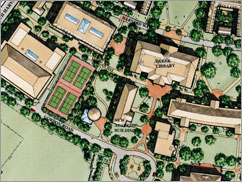 |
| A Facility Database records the inventory of spaces for a set of buildings, or a specific building. A database is fundamental for a space utilization analysis. In preparing a database, each assignable space is described with data fields that include: room number, room use, size, departmental designation, station count, and occupant. Over the years, we have assembled and continuously add to a large database from the many clients that we have worked with. This database is an important and useful tool for comparative purposes. |
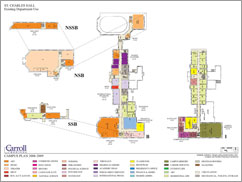  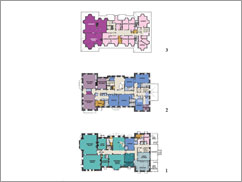
|
| A Parking Analysis assesses adequacy and convenience of parking - an issue at most institutions. A parking inventory can be readily quantified and compared with parking provided at other, similar institutions in order to evaluate this important resource. A campus plan needs to provide a reasonable supply of parking aligned with proposed programmatic changes, proposed building and site developments, and any unique local factors. |
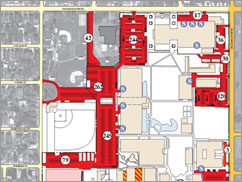  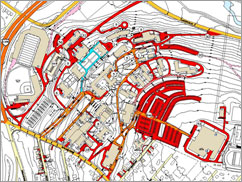 |
| Design Guidelines can be part of a campus planning study to ensure that future development is consistent in physical appearance and quality. Design consistency helps to establish a sense of place. Architectural design guidelines prescribe choices of building scale, form, composition, and materials. Landscape design guidelines prescribe choices for selection and placement of plantings and site construction including paving, fences, walls, and site furnishings (light standards, benches, etc.). |
   |
| A Property Acquisition study examines an institution's landholdings in the context of its surroundings. This type of study investigates alternatives for expanding property holdings and ways the additional land might be integrated with the campus. When limited or awkwardly configured landholdings constrain development, such focused study establishes a rational and cost effective land acquisition strategy. Clearly expressed alternative sites are readily evaluated. |
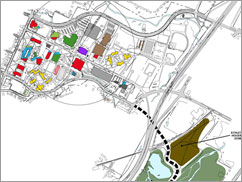  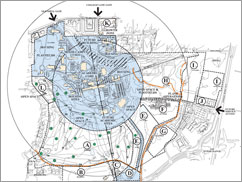 |
| A Site Selection study investigates alternatives for locating new construction, building additions, parking, or landscape features. A site selection study identifies optimal choices based on a rational evaluation, relevant to the context and to an institution's clearly stated priorities. |
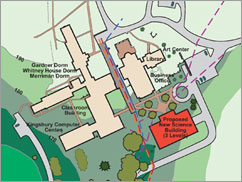  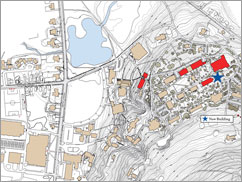 |
| A Demographic Analysis studies the surrounding community and region to see how that area’s socioeconomic factors might affect the institution over the long term. |
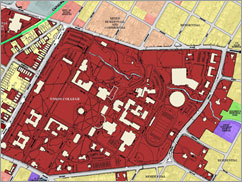  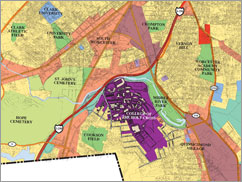 |
| A Vital Signs Study is a brief and focused diagnostic survey of an existing campus, usually conducted on a two- or three-day site visit. A vital signs study uses comparative information about similar campuses to identify a menu of site and facility improvements or to set the focus for ensuing detailed studies. |
   |
|
|

























